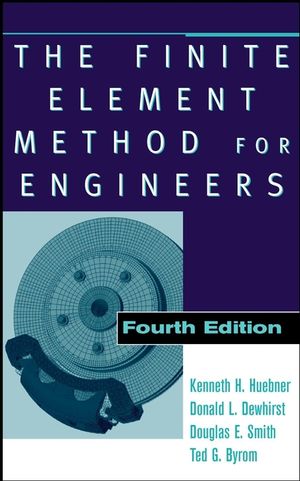|
Textbook
The Finite Element Method for Engineers, 4th EditionISBN: 978-0-471-37078-9
Hardcover
744 pages
September 2001, ©2001
 This is a Print-on-Demand title. It will be printed specifically to fill your order. Please allow an additional 10-15 days delivery time. The book is not returnable.
|
||||||
A useful balance of theory, applications, and real-world examples
The Finite Element Method for Engineers, Fourth Edition presents a clear, easy-to-understand explanation of finite element fundamentals and enables readers to use the method in research and in solving practical, real-life problems. It develops the basic finite element method mathematical formulation, beginning with physical considerations, proceeding to the well-established variation approach, and placing a strong emphasis on the versatile method of weighted residuals, which has shown itself to be important in nonstructural applications.
The authors demonstrate the tremendous power of the finite element method to solve problems that classical methods cannot handle, including elasticity problems, general field problems, heat transfer problems, and fluid mechanics problems. They supply practical information on boundary conditions and mesh generation, and they offer a fresh perspective on finite element analysis with an overview of the current state of finite element optimal design.
Supplemented with numerous real-world problems and examples taken directly from the authors' experience in industry and research, The Finite Element Method for Engineers, Fourth Edition gives readers the real insight needed to apply the method to challenging problems and to reason out solutions that cannot be found in any textbook.
The Finite Element Method for Engineers, Fourth Edition presents a clear, easy-to-understand explanation of finite element fundamentals and enables readers to use the method in research and in solving practical, real-life problems. It develops the basic finite element method mathematical formulation, beginning with physical considerations, proceeding to the well-established variation approach, and placing a strong emphasis on the versatile method of weighted residuals, which has shown itself to be important in nonstructural applications.
The authors demonstrate the tremendous power of the finite element method to solve problems that classical methods cannot handle, including elasticity problems, general field problems, heat transfer problems, and fluid mechanics problems. They supply practical information on boundary conditions and mesh generation, and they offer a fresh perspective on finite element analysis with an overview of the current state of finite element optimal design.
Supplemented with numerous real-world problems and examples taken directly from the authors' experience in industry and research, The Finite Element Method for Engineers, Fourth Edition gives readers the real insight needed to apply the method to challenging problems and to reason out solutions that cannot be found in any textbook.



